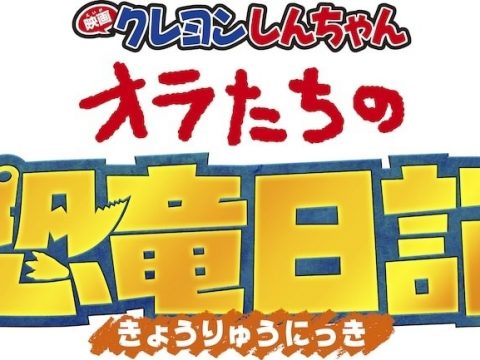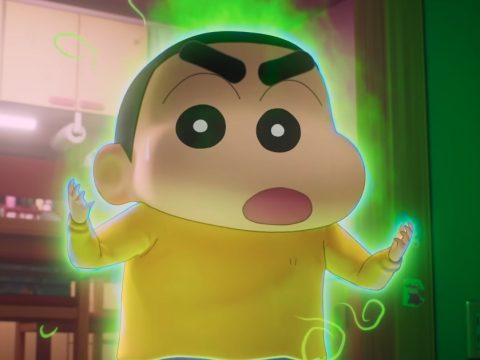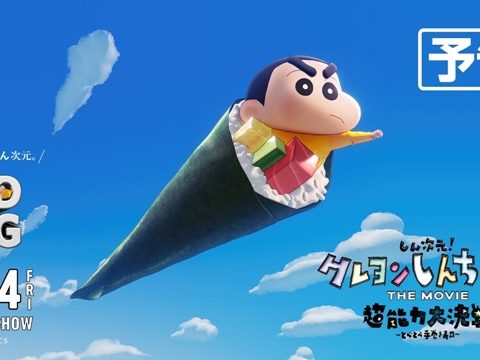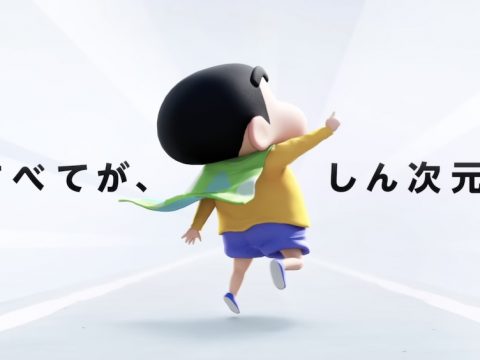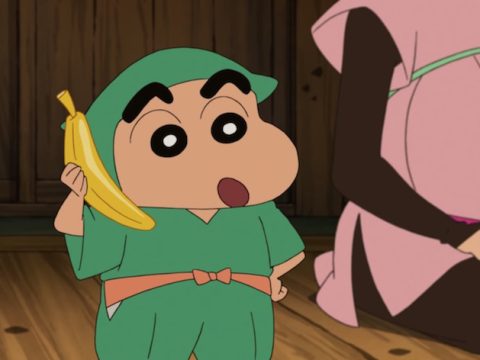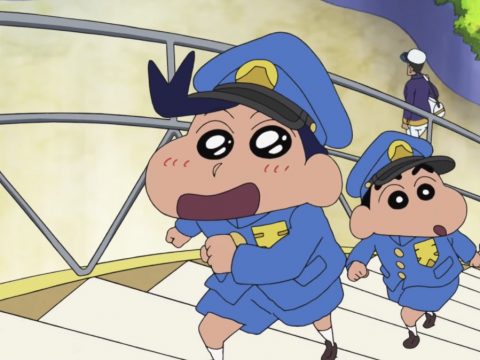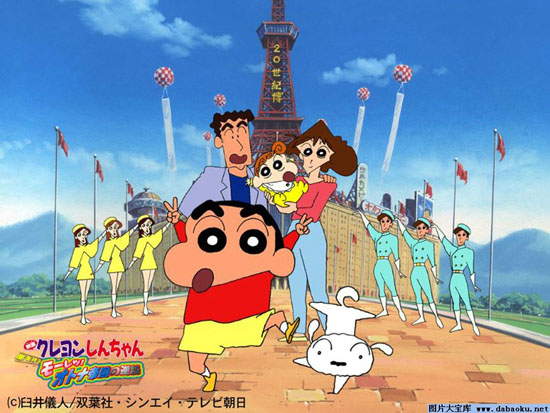
Theatrical anime movies don’t come out in America very often anymore, and perhaps that’s part of why they don’t really get made as much anymore compared to how things were “back in the day.” Movies require more time and money to create than television shows after all, though I must confess that when I think of “anime movies,” I’m thinking of unique intellectual properties that aren’t tied in to a previously existing anime such as Mamoru Hosoda’s Summer Wars or Takeshi Koike’s Redline. So far, neither of those films has been licensed for US release.
But technically speaking, there are still decent amounts of box office Japanese animation being created. If you look at the full listing of anime movies released in a given year, the majority of them are theatrical installments of TV properties popular in Japan at the time. Most of these movies never come out in America, unless the show in question is already a big hit. Chances are good that you’ve seen at least one of these sorts of movies at some point. They tend to be self-contained stories that lie completely separate from the timeline of the series itself; a necessity, considering that a far greater audience of kids will be able to watch an anime series for free on television than pay money to see it in theaters. As such, nothing can really happen in these movies to affect anything in the long term whatsoever. You might say they’re done-in-one “filler” tales, and indeed they tend to play out like extended TV episodes with higher budgets.
That’s why you get completely blindsided when a movie of this type ends up being amazing. In the year 2000 the fact that Digimon: Our War Game was far more than it needed to be surprised everyone, though you might be less surprised in 2010 now that its director Mamoru Hosoda has since made both The Girl Who Leapt through Time and the aforementioned Summer Wars. But the year 2001 may have given us the best example: that year’s Crayon Shin-chan movie.
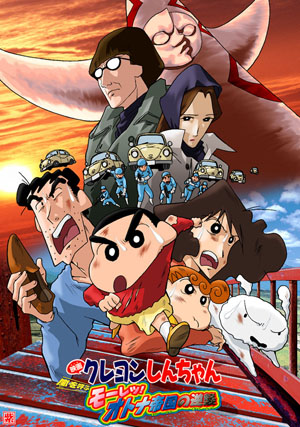 To date, there have been 18 such movies; this one was the 9th. Like clockwork, they’re released on the exact same weekend every year, and normally people think of them as nothing more than “more Shin-chan.” But this time, it was different. Sub-titled The Adult Empire Strikes Back, the timing and content of this movie couldn’t have been more appropriate. Released during the official first year of the 21st century, the core thematic elements of this film could not POSSIBLY be understood or fully appreciated by its presumably intended target audience of little kids. I know, describing a kid’s movie as “a movie that’s actually for the parents of the kids taking them along” is a softer, gentler way of saying the supposed kid’s movie is duller than watching paint dry (e.g. that Where the Wild Things Are movie), but there’s some real substance here.
To date, there have been 18 such movies; this one was the 9th. Like clockwork, they’re released on the exact same weekend every year, and normally people think of them as nothing more than “more Shin-chan.” But this time, it was different. Sub-titled The Adult Empire Strikes Back, the timing and content of this movie couldn’t have been more appropriate. Released during the official first year of the 21st century, the core thematic elements of this film could not POSSIBLY be understood or fully appreciated by its presumably intended target audience of little kids. I know, describing a kid’s movie as “a movie that’s actually for the parents of the kids taking them along” is a softer, gentler way of saying the supposed kid’s movie is duller than watching paint dry (e.g. that Where the Wild Things Are movie), but there’s some real substance here.
The story opens with Shinnosuke and his parents at a recreation of the Osaka World’s Fair of 1970, which in addition to being pivotal to 20th Century Boys might just mark the germination of all otakudom with its “Progress and Harmony for Mankind” vision of the future. Shin-chan’s parents relish in the idea of recapturing their long lost childhoods, so within the opening scenes we’re subjected to parodies of things decades older than any child who would have been watching this movie. Things like the original Ultraman and Magical Witch Sally—the very first “magical girl” anime from the 1960s, from Gigantor creator Mitsuteru Yokoyama—plus a pro wrestling match done entirely in Claymation! The Japanese have a word for this: “natsukashii.” It refers in a sense to “nostalgia,” not for the old days themselves but more the idealized memories of them; “yearning for a time that never truly existed.”
Shin-chan himself serves as the stand-in for the kids in the audience, and so aside from the pretty ladies in attendance he isn’t particularly impressed by any of this stuff. It makes sense. Kids feel no need to relive their childhood since they’re living it now! After visiting this “Museum of the 20th Century,” the entire grown-up cast decides they don’t need to just relive their childhoods at the museum for a day. They can start living that way too! So they start buying vinyl records, driving classic cars, dressing up in 70s/80s fashion wear… say, this sort of thing would never happen with adults in the REAL world, right? Oh wait.
A Crayon Shin-chan movie is probably the last place anyone ever expected to find an extended anti-consumerist monologue about how we keep buying things we don’t need to try and fill the ever-growing emptiness we feel inside ourselves, and how there was once a time when we collectively used to believe in “the future” as a better time of progress and change but no longer… but here it is. Before you know it, the entire nation of Japan decides to forego doing all that stupid, boring adult stuff like work, clean, and raise their kids. Everyone drops everything for the sake of living in the constructed fantasy world of the Museum of the 20th Century, so that they may experience “Yesterday Once More.” A world without kids; an Adult Empire! Gee, that’s kind of like how the real Japan is becoming these days, isn’t it? Except in reality, the virtual world of nostalgia that’s located in Kasukabe is named Lucky Star!
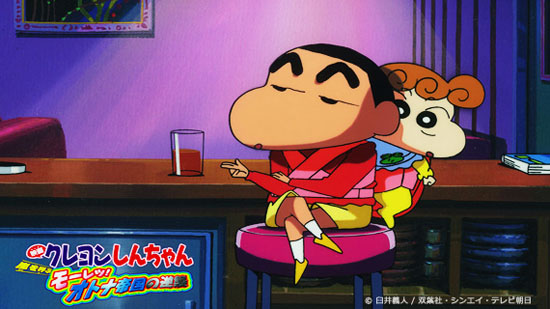
Shin-chan and the kids are thus abandoned and left to fend for themselves, with nobody to feed them and nobody operating the city’s basic utilities and services. Kasukabe becomes a ghost town. Even the TV shows change to black and white reruns of classic Japanese pro wrestling, specifically a caricaturized rendition of a 1960s encounter between Shohei “Giant” Baba versus Dick “The Destroyer” Beyer. Man, those were definitely the good ol’ days—wait, I’m falling into the trap myself! It’s up to the kids to figure out how to bring down the Adult Empire once and for all and get their parents back to “normal.”
What makes The Adult Empire Strikes Back work where so many other reference-heavy anime fail is that screenwriter Tsutomu Mizushima doesn’t expect the viewer to actually get any of the cultural references, a frame of thought carried over to some extent in his later involvement with titles such as Genshiken and xxxHOLiC. They’re all presented as outdated and from a bygone era, and most importantly the references are not the jokes unto themselves. It’s not vitally important that you know about the 1970s World Masterpiece Theater adaptation of 3000 Leagues in Search of Mother or that the “villain” of the movie owns the same model Toyota that James Bond was driving in You Only Live Twice.
Despite the character designs being simple and crude as usual, the animation is substantially better than the TV series, featuring multiple effects sequences that are surprisingly high in 20th century style spectacle. Clearly the makers of the film enjoyed themselves as they were putting this together. I know if I ever made a cartoon, I too would want at least one Blues Brothers-like chase sequence, replete with tons of wrecked cars. Plus, since it’s still Crayon Shin-chan, at the end of the day there are still pee and fart jokes aplenty along with Shin-chan exposing himself on multiple occasions.
With all the pop cultural references and untranslatable puns, a straight-up dub could never work. That’s why, like the rest of the Crayon Shin-Chan movies, it’s doubtful that The Adult Empire Strikes Back will be released in the US by FUNimation any time soon. Unlike the TV series and its hundreds of short stories, it’s tougher to splice bits and pieces from full-length movies to make something new that has a narrative structure and yes, an emotional core about the literal heart of not just otakudom but what it means to grow up right alongside jokes about how Shin-chan’s mom’s got a B-I-G butt [by Japanese standards]. If Shinnosuke Nohara is Japan’s Bart Simpson, then The Adult Empire Strikes Back is Japan’s equivalent to that time Homer Simpson put up all those pictures of Maggie over the “Don’t Forget, You’re Here Forever” sign so it read “Do It For Her” instead.


